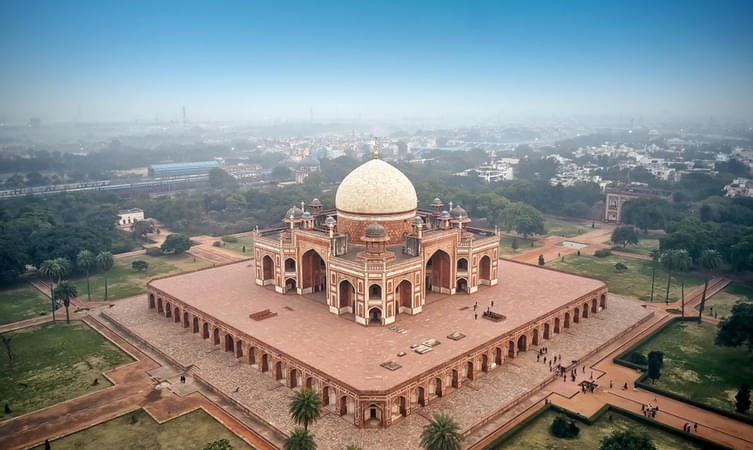
Activity Location: Delhi, India
Activity Duration: 10 minutes, 15 minutes and 20 minutes
About Helicopter Ride In Delhi:
Go on an exclusive sightseeing tour of India’s capital and see the best of Delhi from up high as you soar above it on a helicopter. For the first time ever, experience a breathtaking aerial view of the town. Grab this amazing chance to explore the city 1000-1500 feet above and see Delhi's most famous landmarks immersed in the glow of the shining sun in a Helicopter Robinson R66 4 Seater. In all, book this helicopter ride in Delhi and indulge in this mesmerizing and enthralling experience.

Activity Location: New Delhi, Delhi
Starting Point: Kalkaji Mandir Metro Station, Lotus Temple Road, New Delhi
End Point: Iskcon Temple Road, East of Kailash, New Delhi
Activity Timings:
- Morning: 9:00 AM - 11:00 AM
- Evening: 5:00 PM - 7:00 PM
Activity Duration: 2 hours (Approx.)
About Cultural Walking Tour of Delhi:
Delhi is popular for its culture depicting the ancient and modern lifestyles of India. Witness this serene blend in the architecture of prominent temples in the city. Walk past the lanes and markets of the heritage city where vehicles cannot enter. Have fun and gain insights into the religious beliefs of India as you explore the capital city with a guide cum storyteller.

The Delhi Night Walking Tour and Rickshaw Ride offers a 2-hour exploration of the city’s vibrant culture and rich history. Iconic landmarks like Bangla Sahib Gurudwara and India Gate are beautifully illuminated under the night sky. A classic rickshaw ride through bustling streets provides a unique blend of tradition and adventure. With a knowledgeable guide, fascinating insights and personal anecdotes are shared, enriching your understanding of Delhi’s heritage and creating an unforgettable experience.
Activity Timing: 6 PM to 8 PM
Activity Duration: 2 Hours
Places Covered- Bangla Sahib Gurudwara (Sikh Temple), Cathedral of the Sacred Heart, Election Commission of India building, Sardar Patel Bhawan, National Philatelic Museum, Reserve Bank of India, Museum of India's Philatelic Heritage, Sansad Marg, Akashwani Bhawan, Press Trust of India, Ministry of Labour and Employment, Transport Bhawan, Parliament of India, Cross Road, Central Secretariat building.

- 2D/1N
.jpg?w=305&h=230&dpr)
- 2D/1N
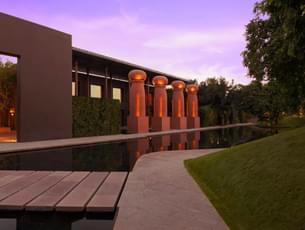
- 2D/1N

- 1H
- New Delhi
- 1H
Starting point & Endpoint: Vijay Path, opposite South Block of Secretariat
Group Size: 8
Delhi is famous for its tourist attractions, Indian history, and food. And the aim of this tour is to provide local insight experience in Delhi but in an adventurous way with a segway.
Segway is a two-wheeled, battery-powered electric vehicle which is included in the package, At the beginning of the tour, the tour leader and instructor will provide you 5-10 minutes of hands-on
orientation session explaining to you how to drive a segway safely. In addition, you will have to wear the
safety gears like helmet, elbow pads, and knee pad which we shall be provided during the tour.
As a part of daily hygiene protocol, proper care of hygiene and sanitation is maintained all through to ensure the utmost care and personal safety of the guests.
There are 3 different itineraries to choose from:
Delhi Art District Tour
The duration of this tour is 1-hour including the orientation session. The itinerary is best suitable for art lovers since the lanes offer 50+ murals along the way. A mural is any piece of artwork painted or applied directly on a wall, ceiling, or other permanent surfaces. You will get to visit the colours of the soul by SENKOE, mural near Khanna Market, art by Yip Yew Ching, Sam Lo’s mural, art with the message of justice, equality, health and fortune, and many more.
Lutyen’s Delhi Tour
Lutyens' Delhi is an area in New Delhi that is named after the British architect Sir Edwin Lutyens. He was responsible for building a lot of famous architectural structures. The duration of this tour is one hour including the orientation session at the start point of the tour. You will be covering the Secretariat, Rashtrapati Bhawan (subject to permission of security personnel), Parliament House, the scenic beauty surrounding the Ministry buildings on Rajpath, various government buildings, Amar Jawan Jyoti, India Gate, and finally conclude the whole tour at the start point.
Historic Delhi Tour
The duration of this tour is 1 hour and 45 minutes including the orientation session at the start point of the tour. This tour is an add-on to the Lutyen's tour. You will be covering places such as Secretariat, Rashtrapati Bhawan, Parliament House, the scenic beauty surrounding the Ministry buildings on Rajpath, various government buildings, etc. The add on in this tour will be Baroda House (the residence of the Maharaja of Baroda in Delhi), Pragati Maidan, Purana Quila, Delhi Zoo, Masjid Khairul Manzil, and many more amazing places.
How to Reach: Karol Bagh metro station is the closest to the starting point at just a 2-minute rickshaw ride. You can also take a private taxi to reach the starting point.

- 3H
- New Delhi
- 3H
Timings: 06:30 AM to 10:00 AM
Meeting Point: Hotel Broadway, Asaf Ali Road
Minimum age required: 8 years
Group Size: Maximum 10 people
Minimum number of people required to book this activity: 1
How to Reach?
The activity starts with Chandni Chowk in New Delhi which is easily accessible through public or private transport.
Visit Asia’s largest Spice Market at Khari Baoli Road

The spice market is renowned for being the largest spice market in all of Asia and witnesses hundreds of traders setting up shop here every day. Apart from spices, this Spice Market also sells dried fruits, specially crafted Indian sweets, rice, mulberries, herbs, and grains.
Timings: The market remains open between 10.00 AM to 09.00 PM every day of the week.

- 2D/1N
- New Delhi

- 7H
- New Delhi
Experience the Haunted Places

- One might choose to visit Agrasen ki Baoli, the now evacuated salt well that is now believed by locals to be haunted.
Location: Hailey Road, KG Marg, near Diwanchand Imaging Centre, New Delhi, Delhi 110001
Location: New Delhi, Delhi 110010
Location: Netaji Subhash Marg, Priyadarshini Colony, Kashmere Gate, New Delhi, Delhi 110006
Location: Central Ridge Reserve Forest, New Delhi, Delhi 110001
Discover the History of Delhi

Location: Mehrauli, New Delhi, Delhi 110030
Location: Netaji Subhash Marg, Lal Qila, Chandni Chowk, New Delhi, Delhi 110006
Location: Mathura Road Opposite, Hazrat Nizamuddin Aulia Dargah, Nizamuddin, New Delhi, Delhi 110013
Haveli of Mirza Ghalib at Gali Qasim Jaan

The Museum also houses a life-sized replica of the poet with a hookah in his hand. It also preserves handwritten poems by the poet and some of the first copies of his poetry books. The historical and literary significance of the Haveli makes it one of the most offbeat places to visit in Delhi.
Location: 2469,Gali Captain ,Baradari, Balli Maran, Delhi, 110006
Timings: The Haveli is closed on Mondays. It remains open between 10.00 AM to 06.00 PM on all other days of the week.
Listen to Qawwalis at Nizamuddin Dargah

Preaching the message of peace and love, the heart wrenching Sufi music is one of the most soulful genres of classical music, and the splendid Qawali sessions make Dargah one of the most offbeat places to visit in Delhi. The popularity of the music sessions attracts not only Muslims here, but people of other faiths as well.
Location: Boali Gate Rd, Nizamuddin, Nizamuddin West Slum, Nizamuddin West, New Delhi, Delhi 110013
Timings: The Dargah remains open every day of the week between 06.00 AM and 10.00 PM. The Qawwali sessions take place twice every Thursday, once at 04.30 PM and once at 06.00 PM.
Watch the Change of Guard Ceremony

After that, the Parade Commander marches in, followed by the 8th Jammu and Kashmir Light Infantry. The two guards exchange a national salute, followed by an exchange of military duties. The ceremony ends with the playing of the National Anthem.
Timings: The Change of Guard Ceremony takes place every Saturday and Sunday. The timings of the ceremony are as follows:
Discover Champa Gali

Champa Gali offers a picturesque, postcard vibe and is built out of small homely cafes, art galleries and quaint little stores. There are a number of handicraft stores that attract connoisseurs of art to the place. Champa Gali is especially popular among younger college crowds, who visit the place for live music gigs or spoken poetry sessions. With its rustic charm, this is one of the offbeat places in Delhi that should be visited by all.
Timings: The community remains open for public visits between 11.00 PM and 10.00 PM every day of the week.
Meet Travel Enthusiasts at Kunzum Travel Café

Kunzum Café also occasionally organizes interactive workshops and talk sessions with travelers, photographers, writers and other personalities who toured the world as a part of their job. Visitors are also encouraged to share their travel stories by pinning up anecdotes and pictures on the café billboard or uploading it into the online scrapbook maintained by it. With its unique vibe and laid back atmosphere, Kunzum Travel Café is definitely one of the most offbeat places to visit in Delhi.
Timings: The café remains closed on Mondays. It remains open between 11.00 AM to 07.30 PM on all other days of the week.
Chhota Qutub Minar

The tower was initially 5 stories tall, with the dome top consisting of two stories. The tower was initially built as an entertainment sector for the Emperor after he had finished with his hunting session in the wilderness that immediately surrounded the tower. The curious architecture and historical significance of the Chhota Minar makes it one of the most prominent offbeat places in Delhi.
Location: Hastsal Village, Delhi.
Timings: The Mini Qutub Minar is not open for public visits.
Volunteer at the Gurudwara Bangla Sahib Kitchen

The Gurudwara turns out at least thirty to forty thousand plates of food everyday, made with the collective effort of those volunteering at the kitchen. The meals are free and available for anyone willing to eat here, especially the homeless and the poor who cannot afford three square meals per day. The Gurudwara serves meals twice a day, once between 09.00AM to 03.00PM and then again between 07.00PM to 10.00PM.
Timings: Open 24 hours on all days of the week.














.jpg?w=305&h=230&dpr)







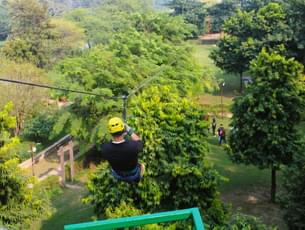

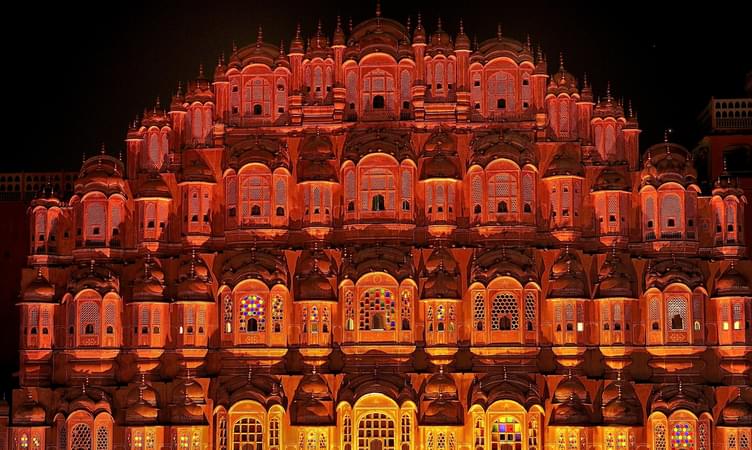






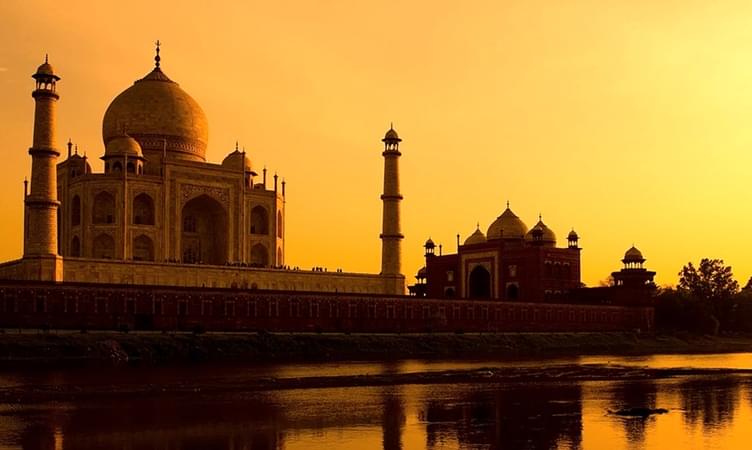






.jpg?gravity=center&width=752&height=450&crop=fill&quality=auto&fetch_format=auto&flags=strip_profile&format=jpg&sign_url=true)








.jpg?w=305&h=230&dpr)

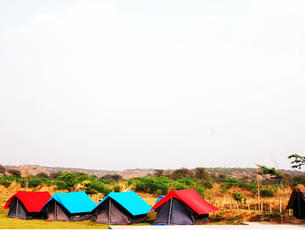


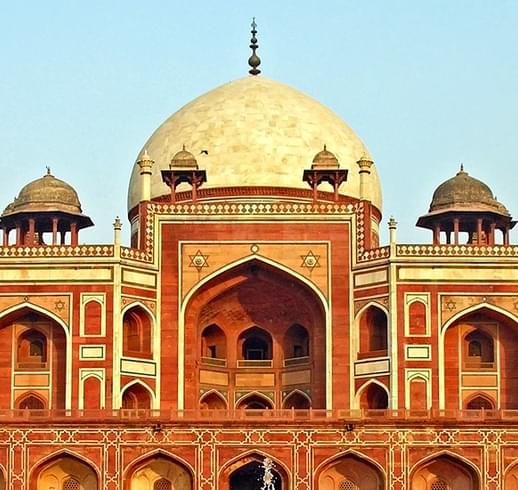
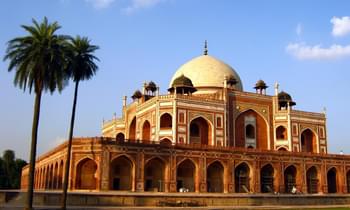
.jpg?w=350&h=210&dpr)




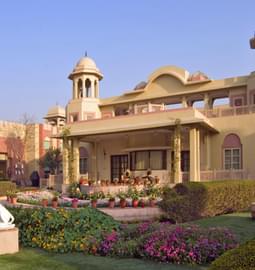


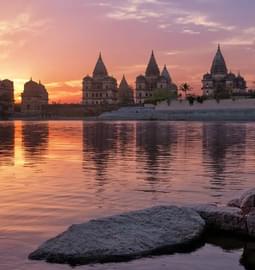




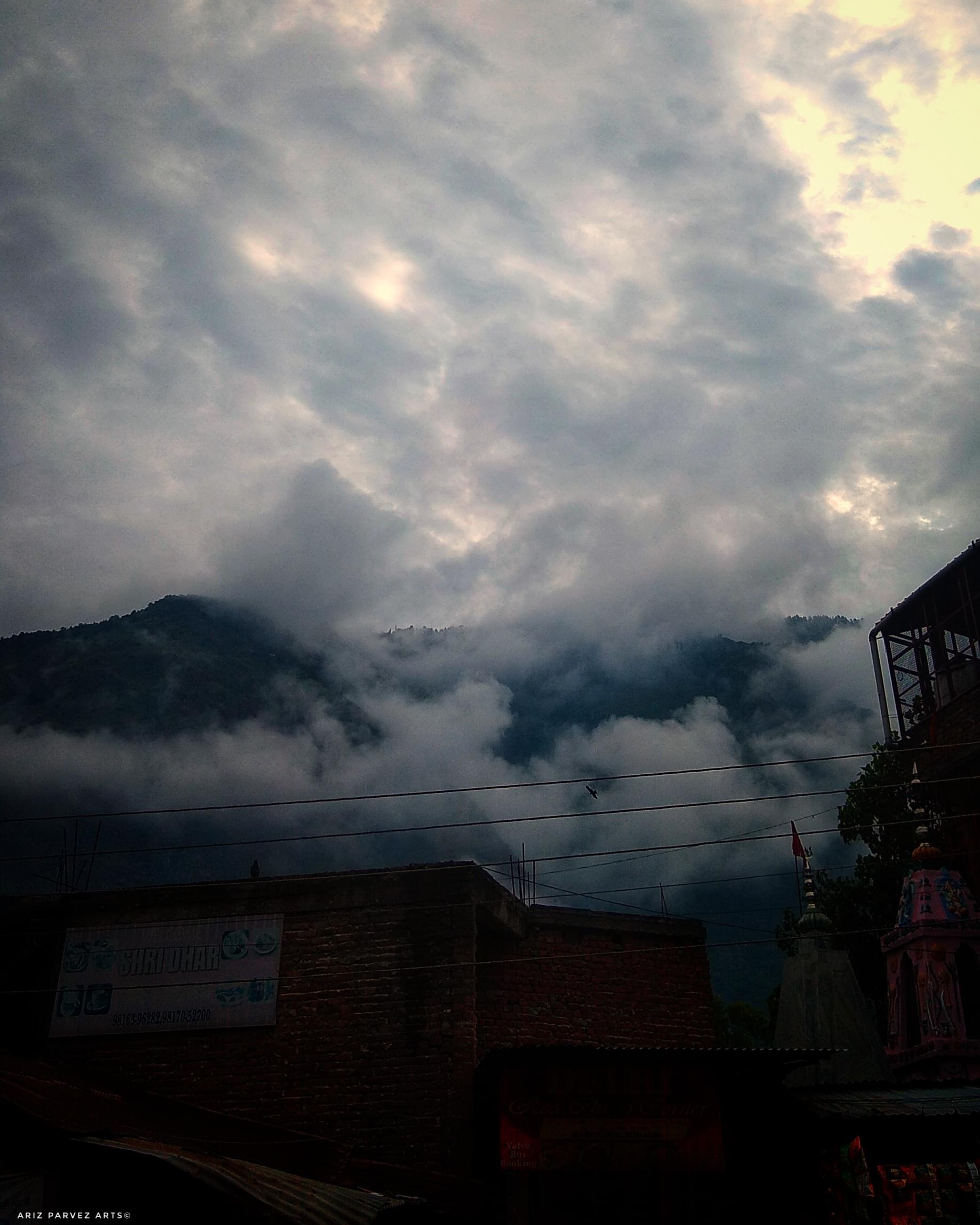


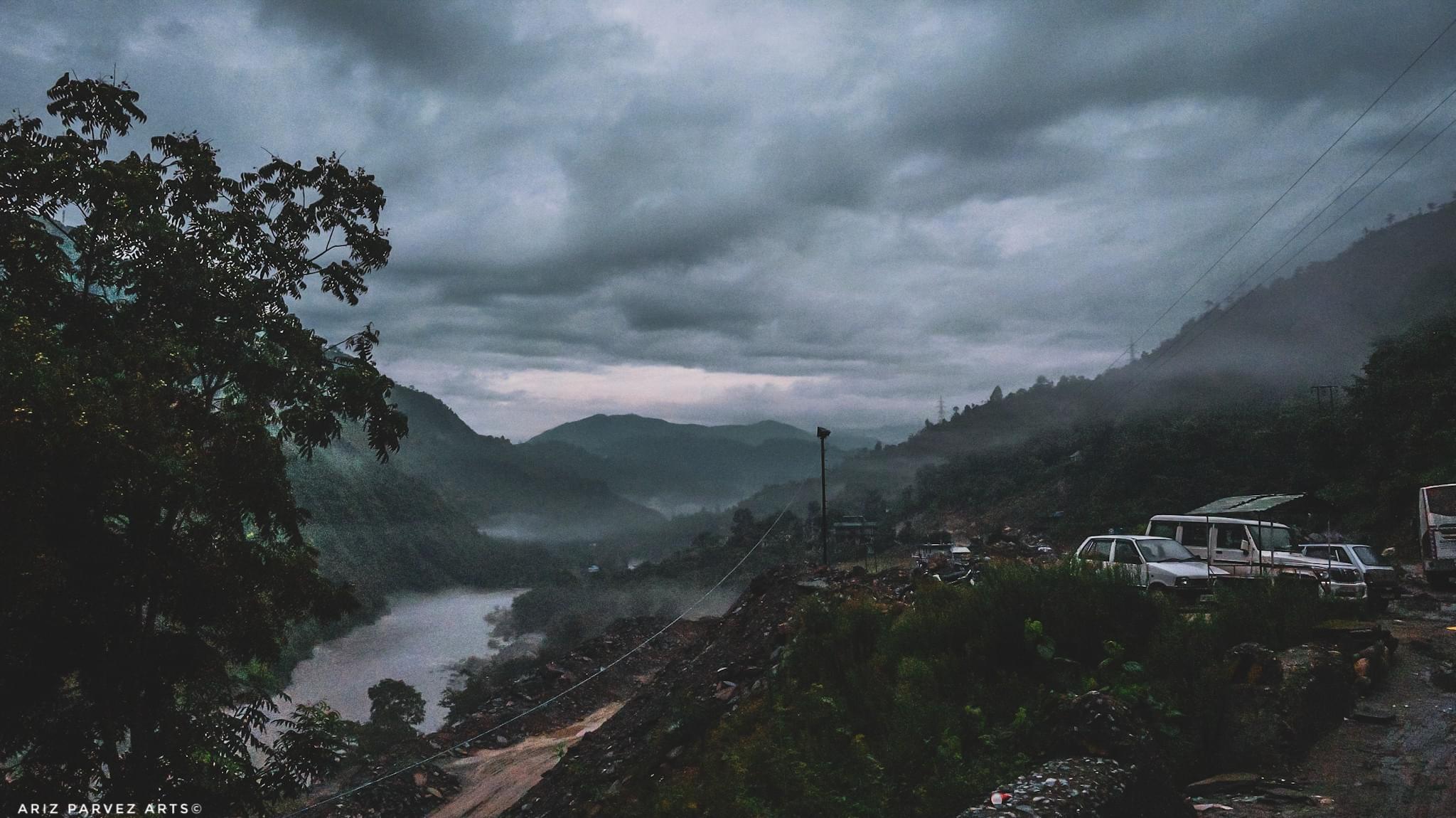
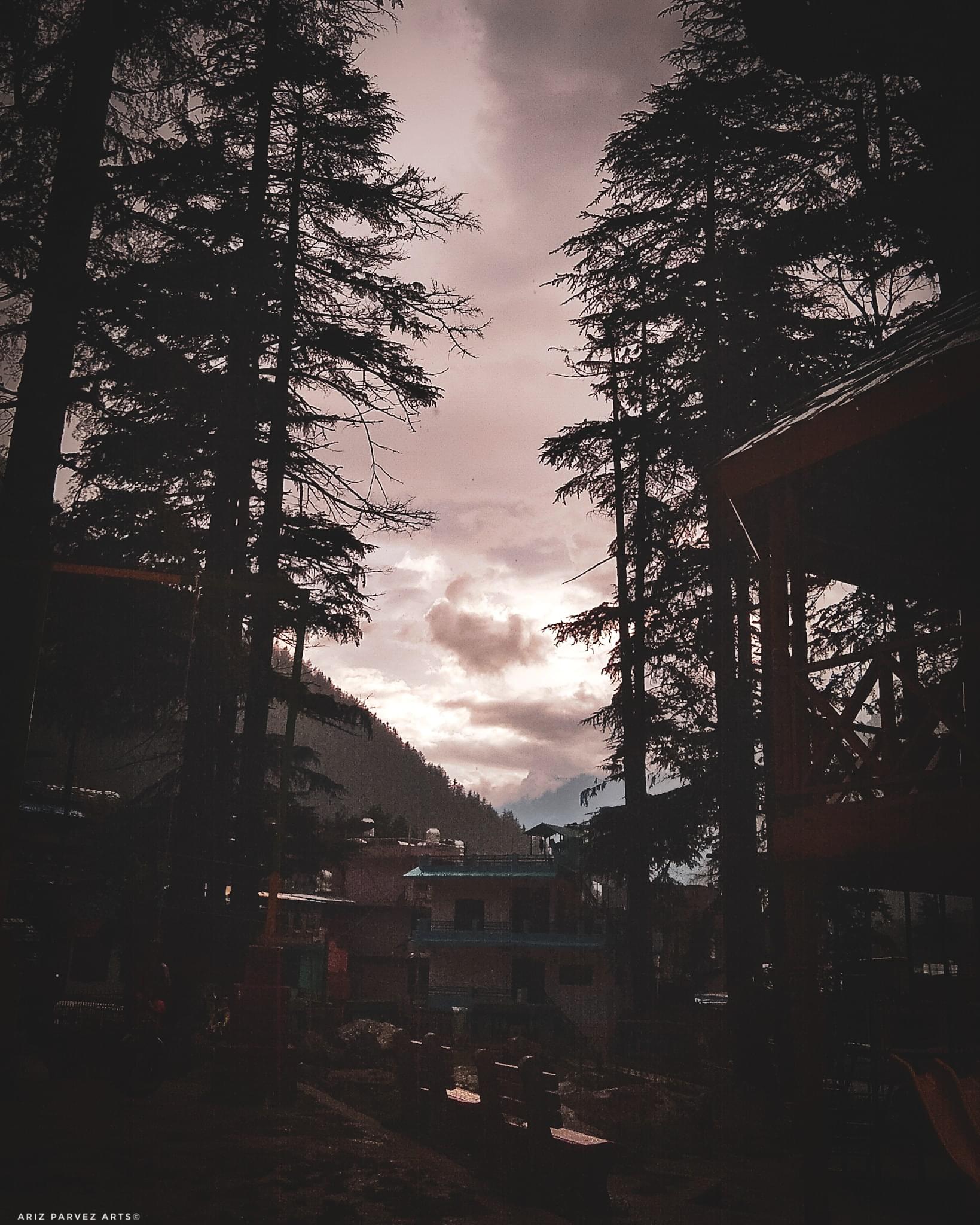
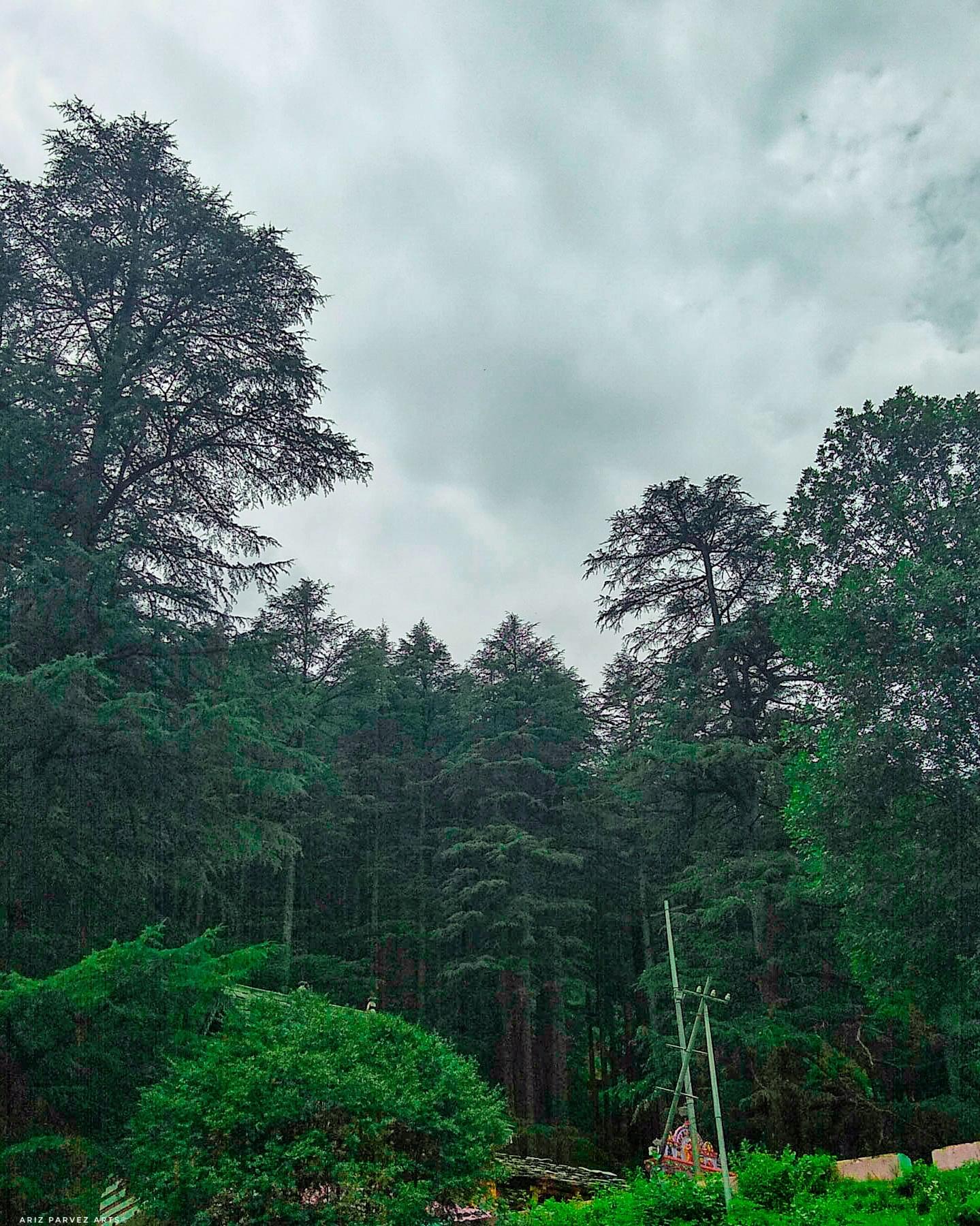
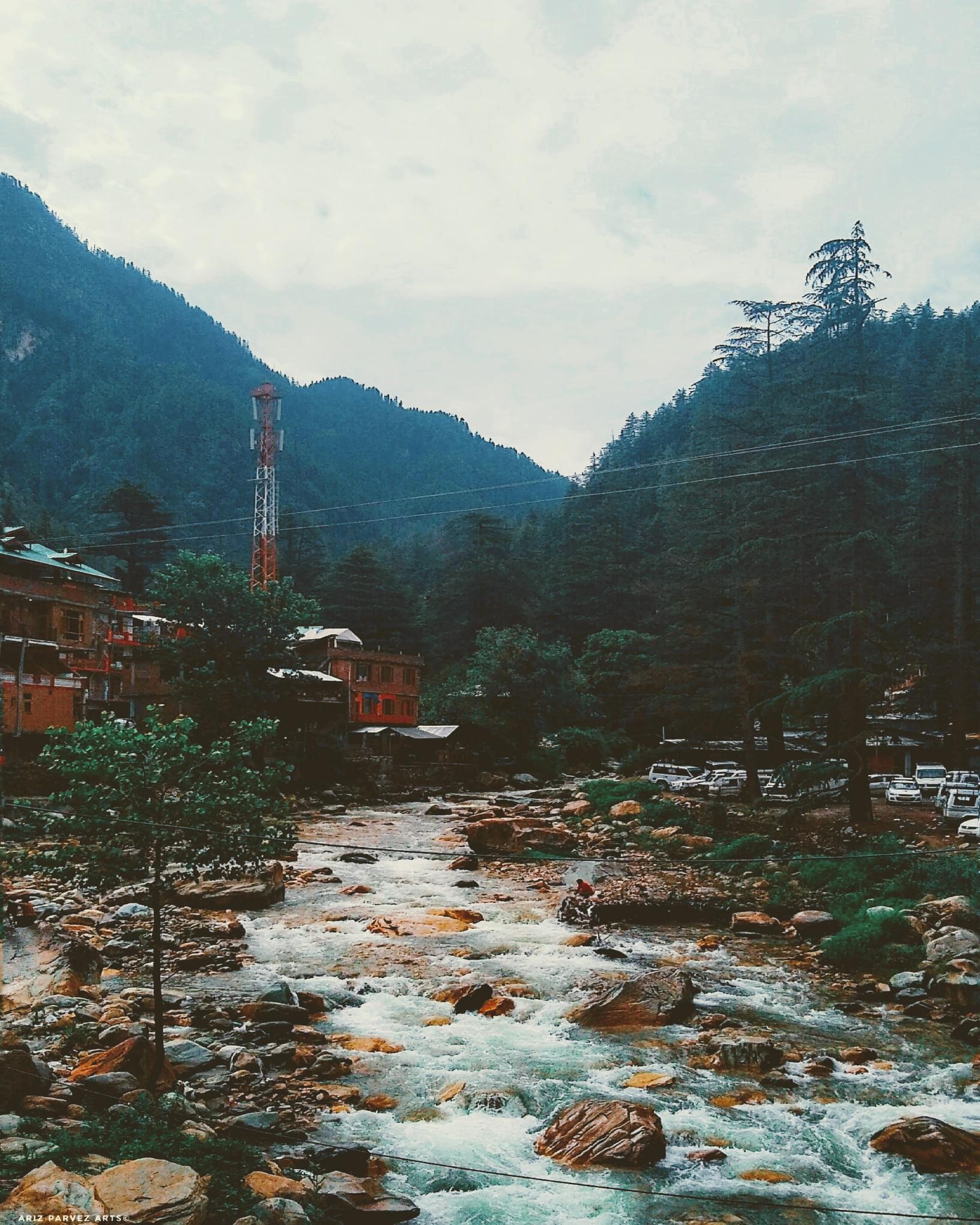
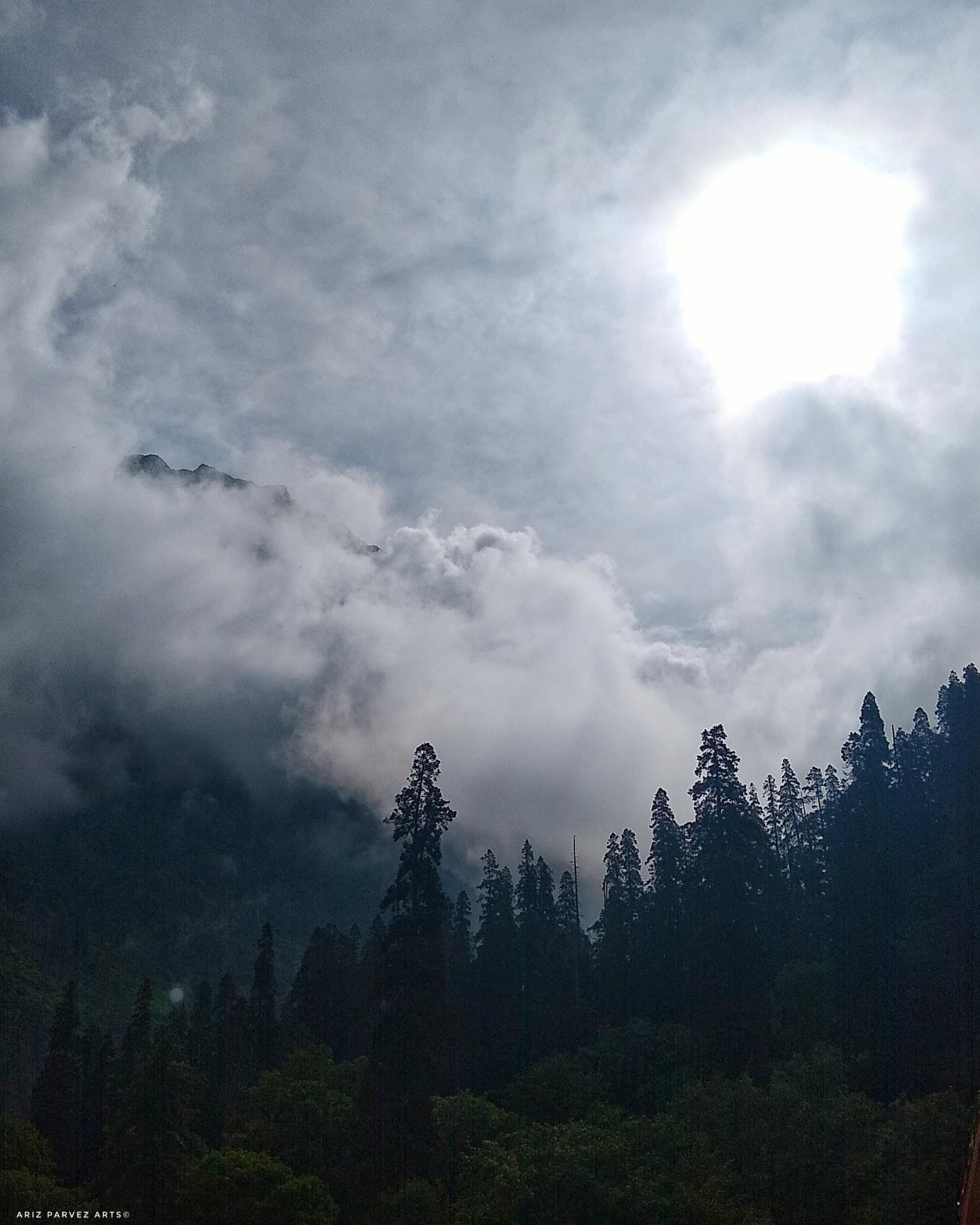

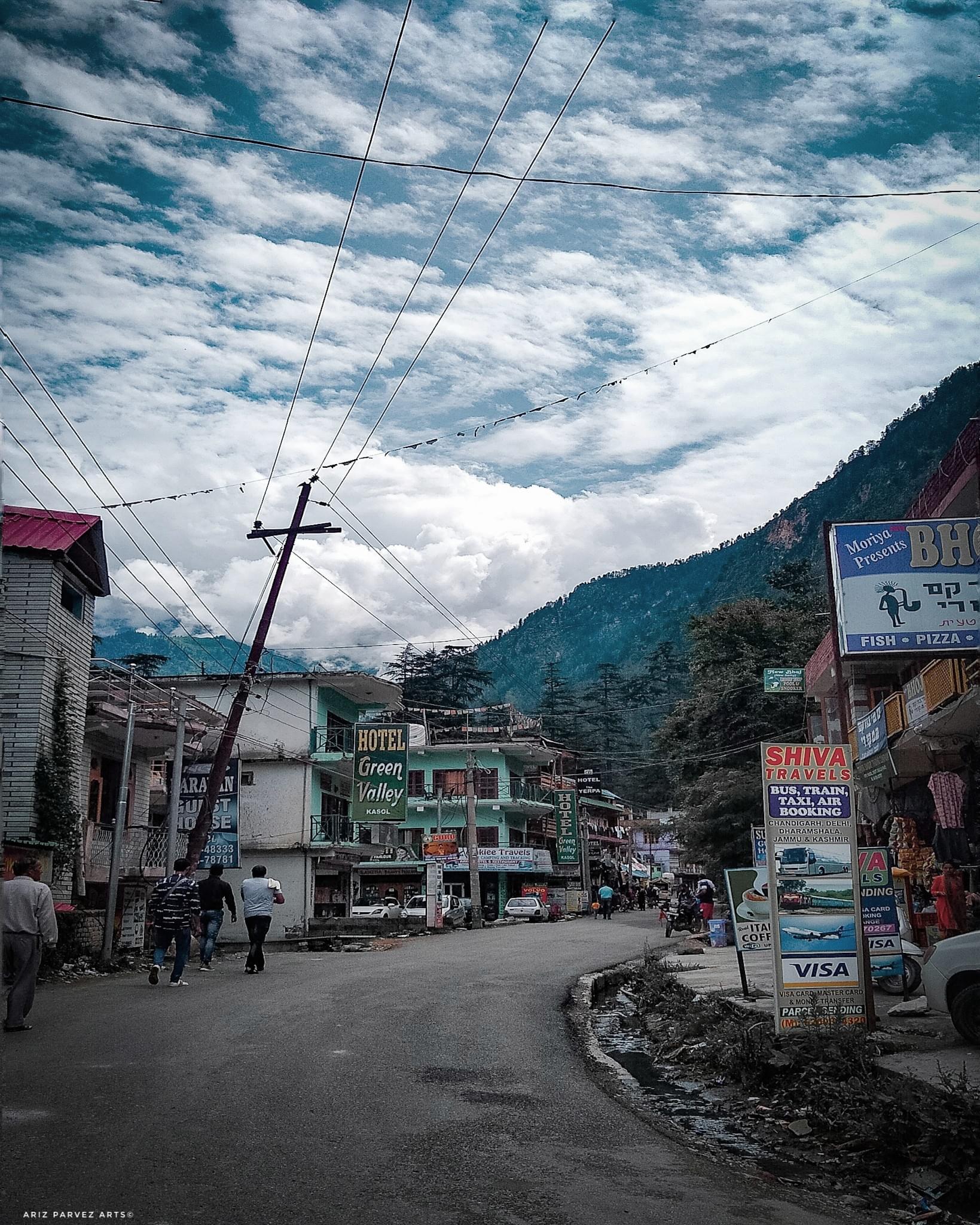


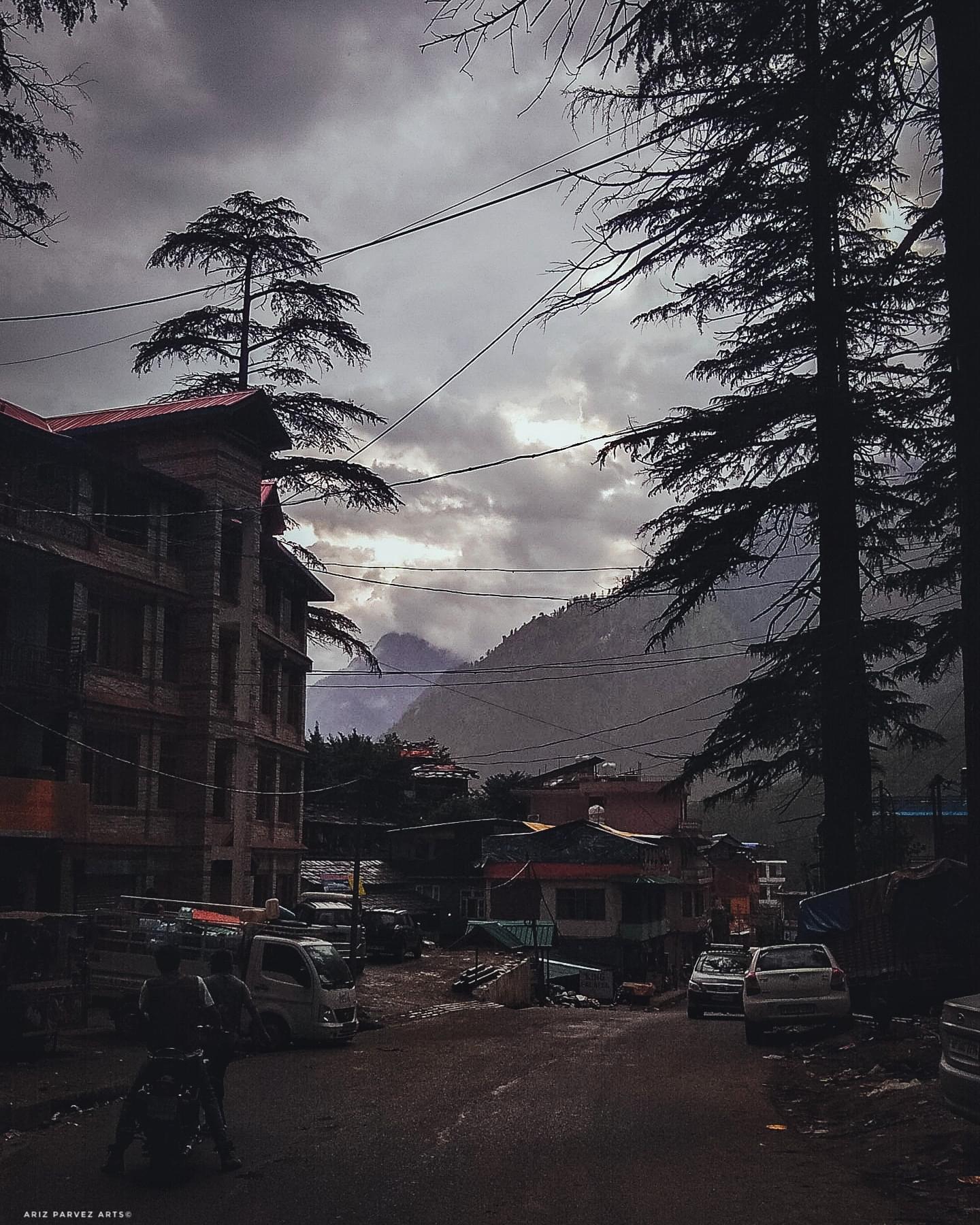

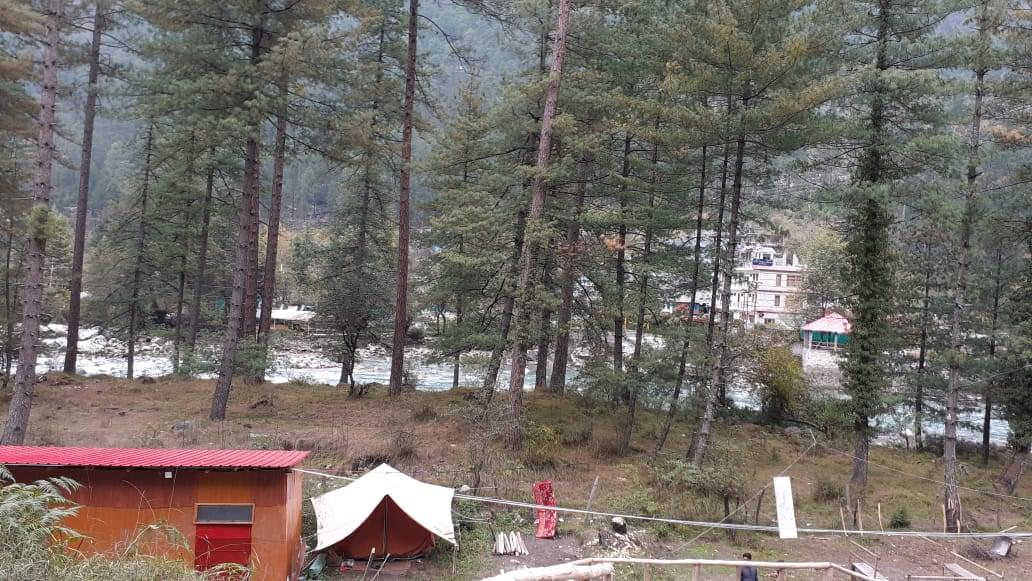
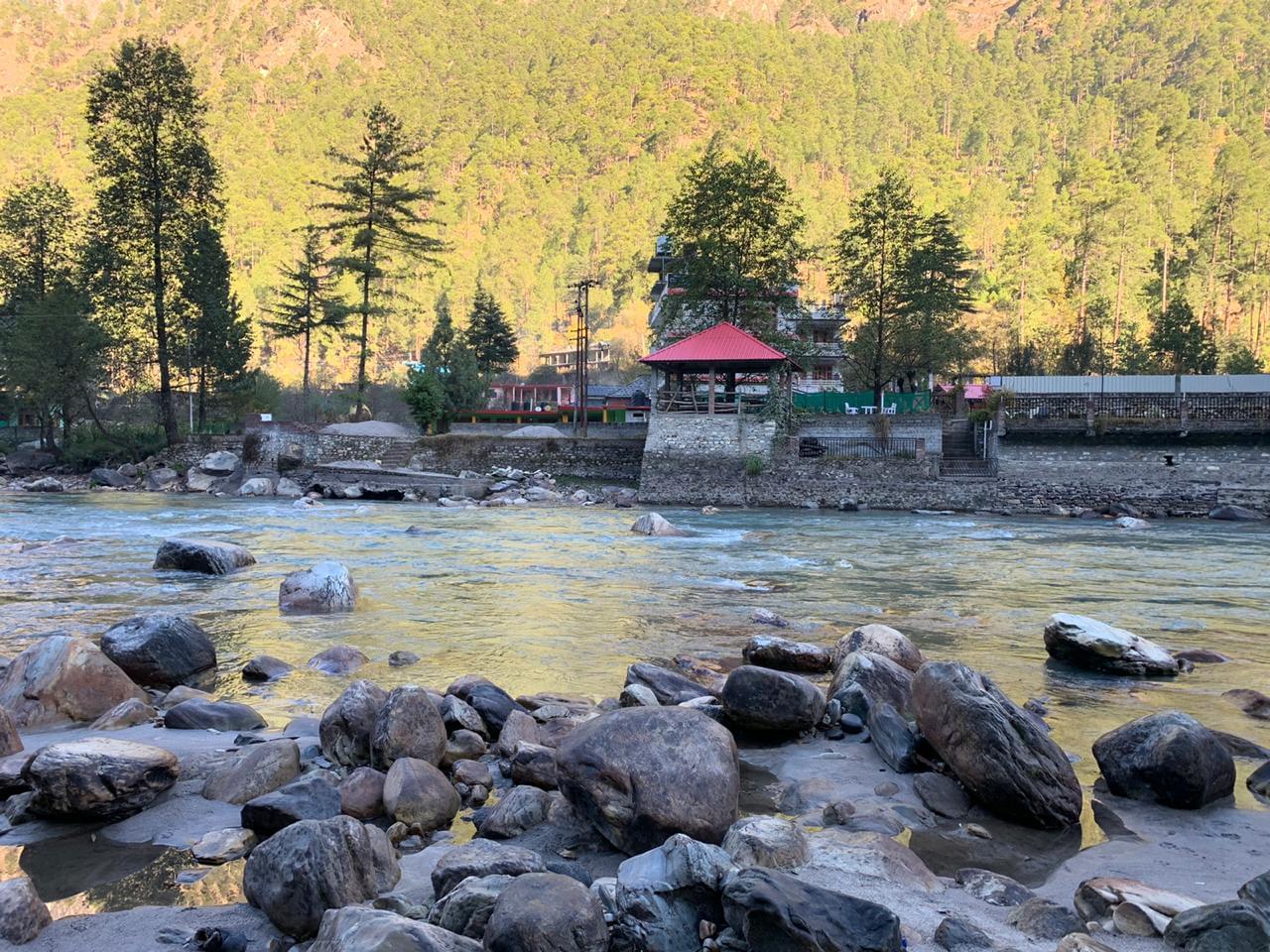

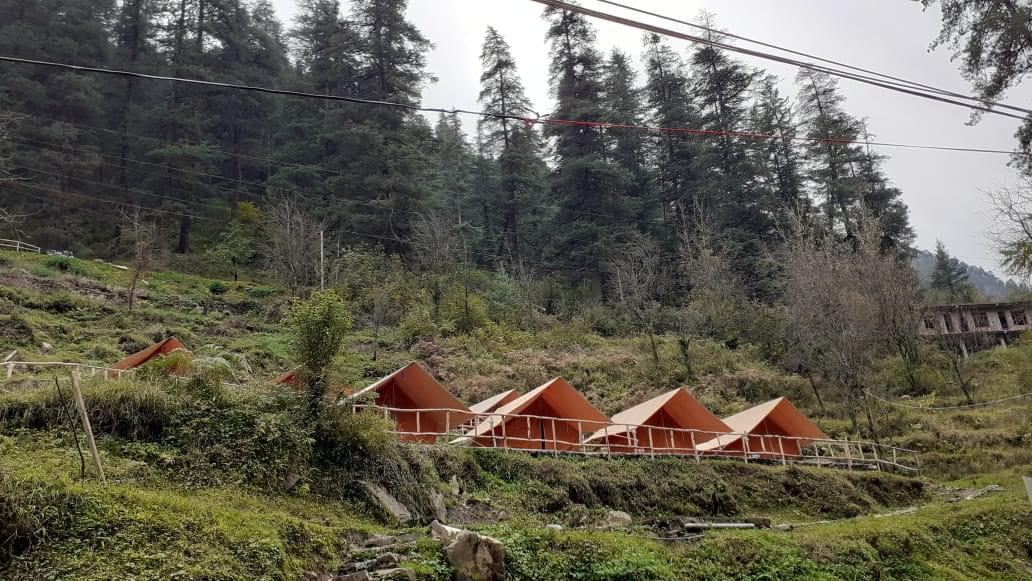
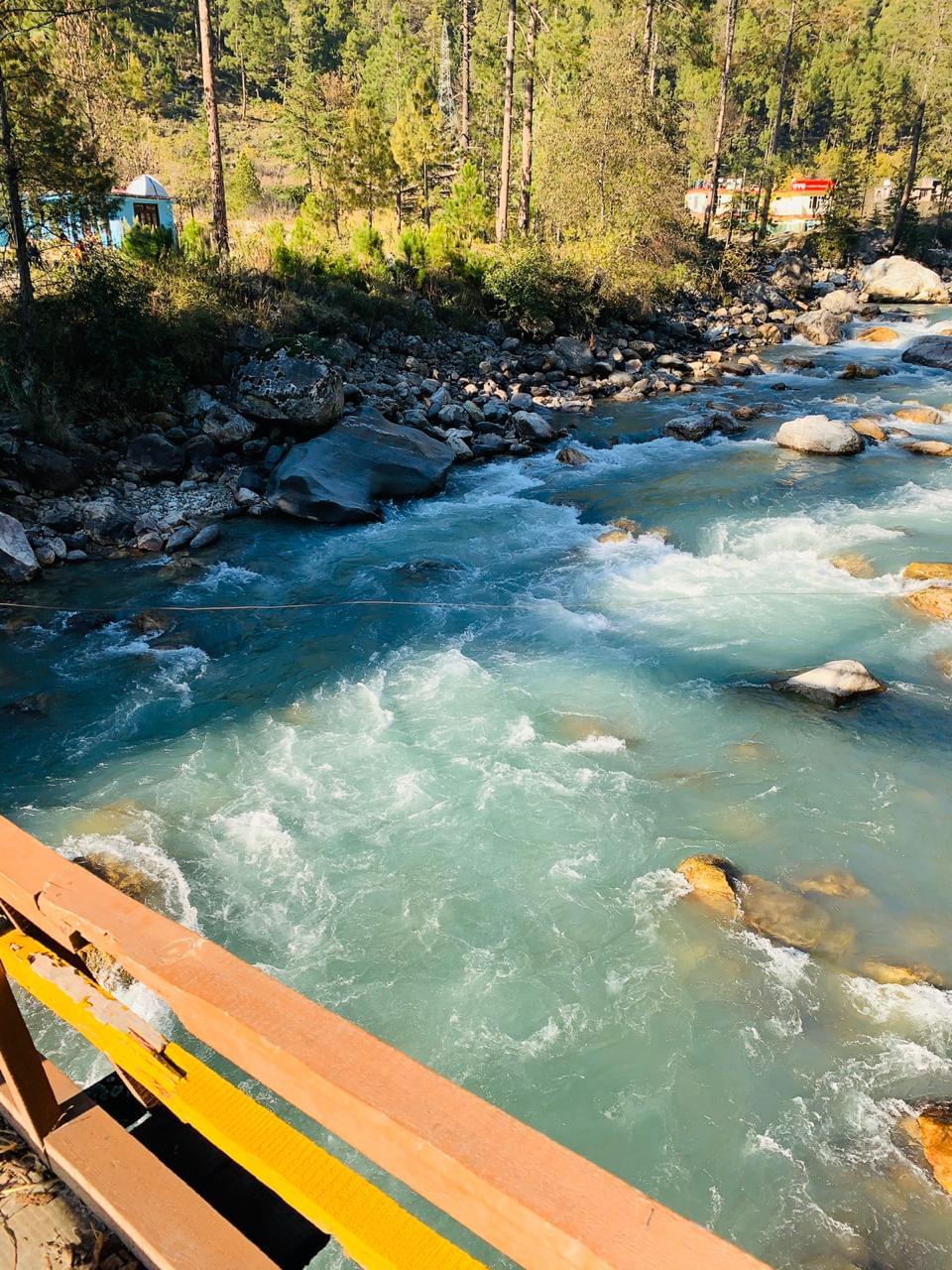
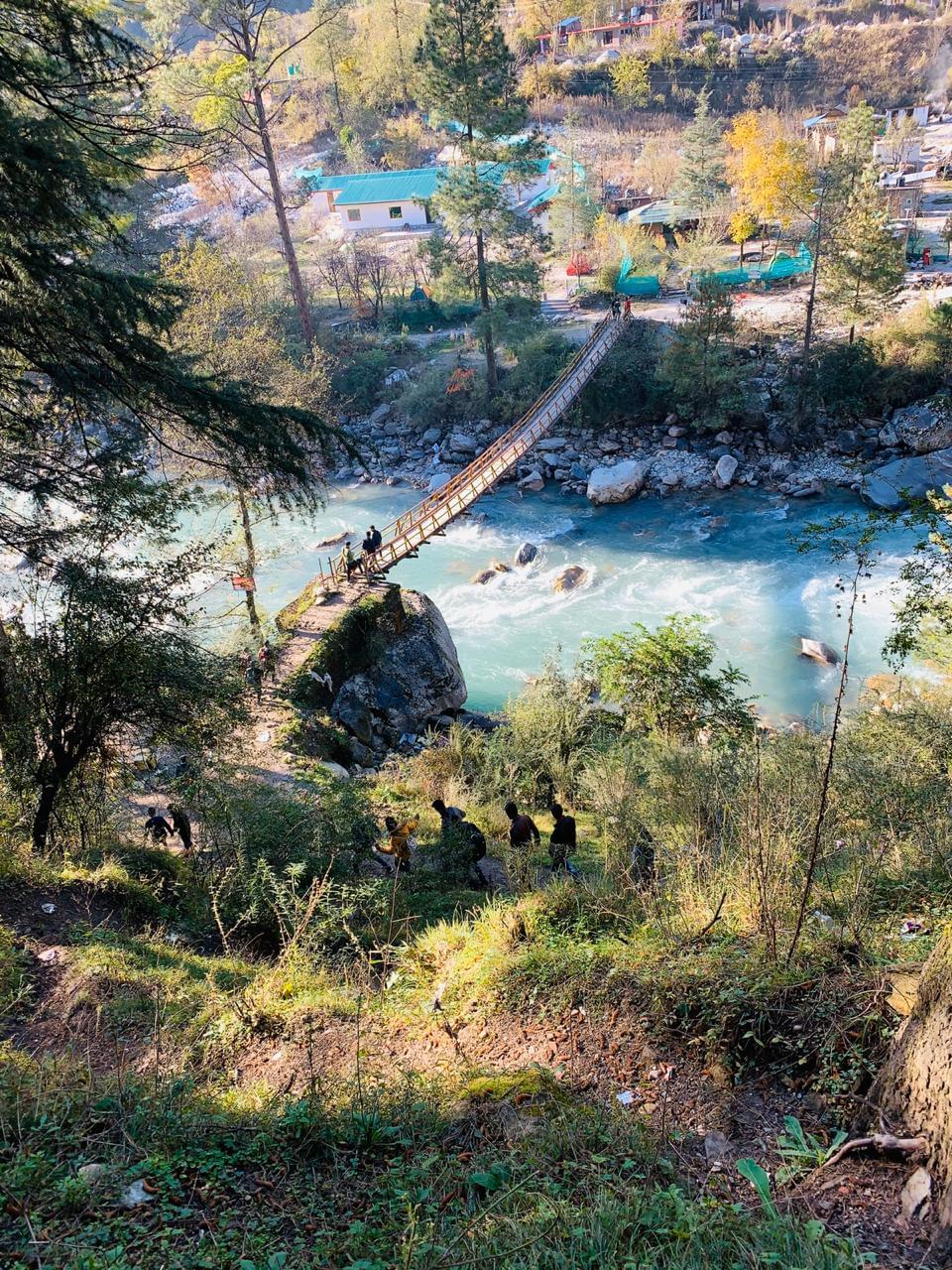
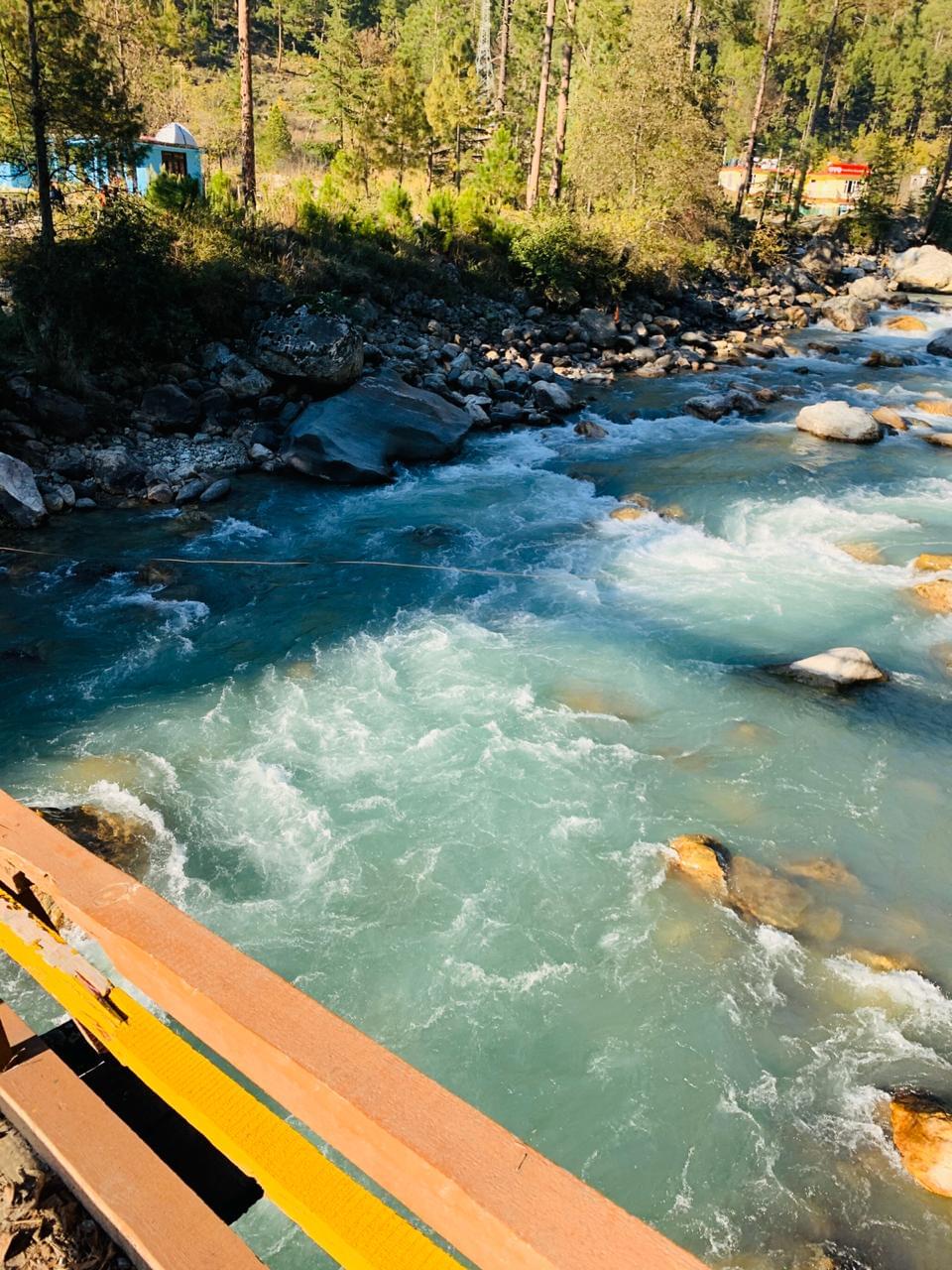
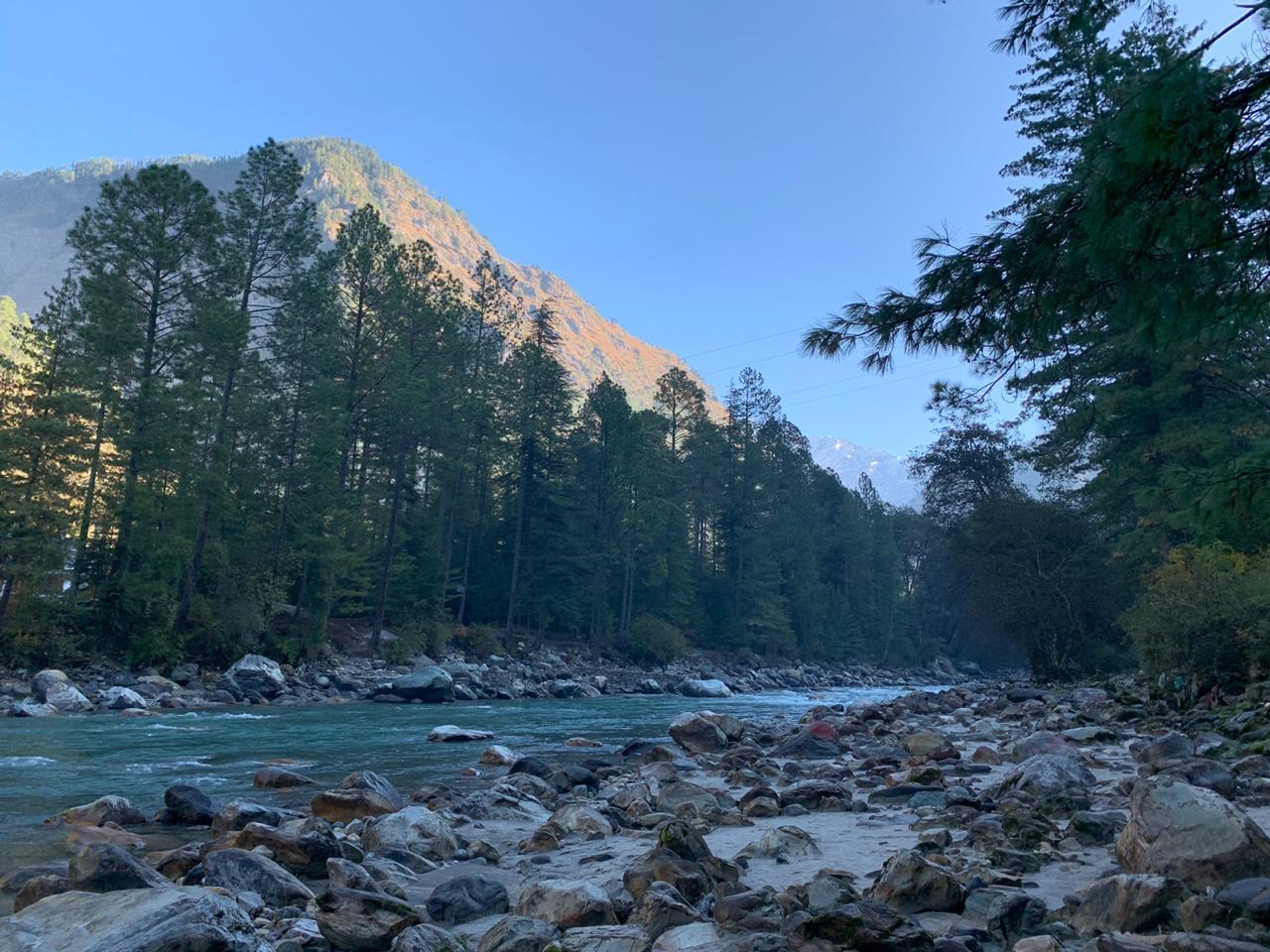






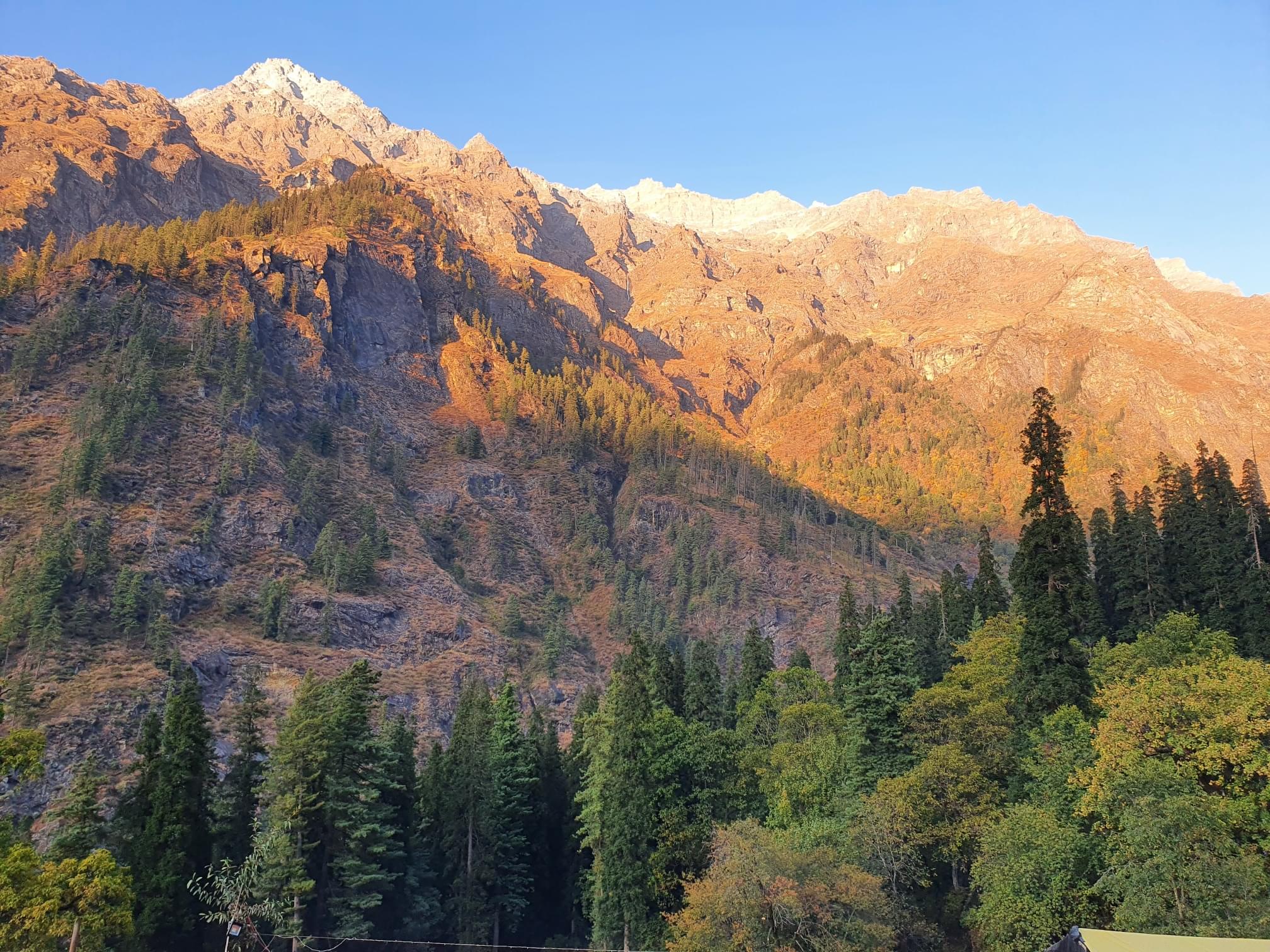
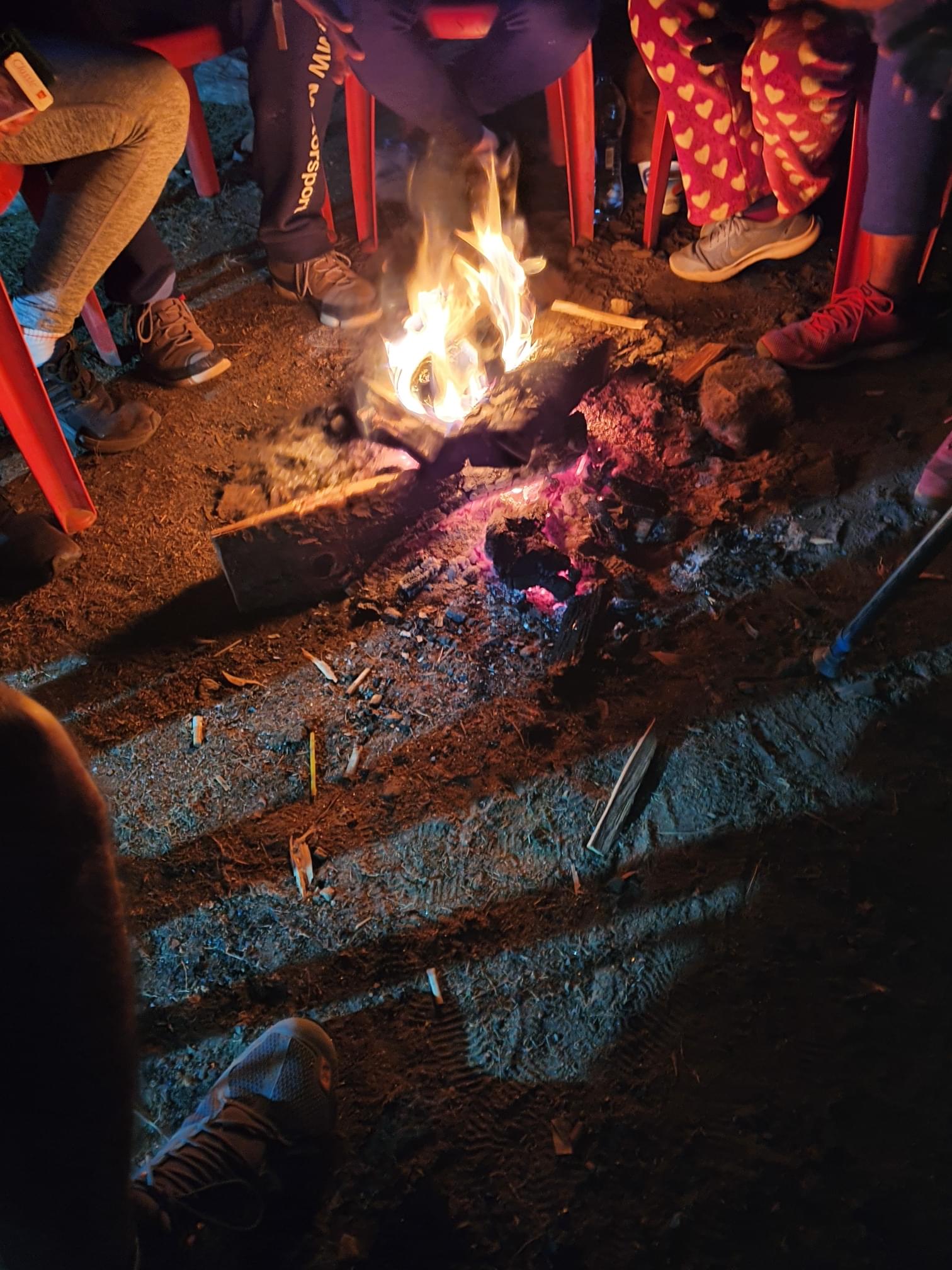












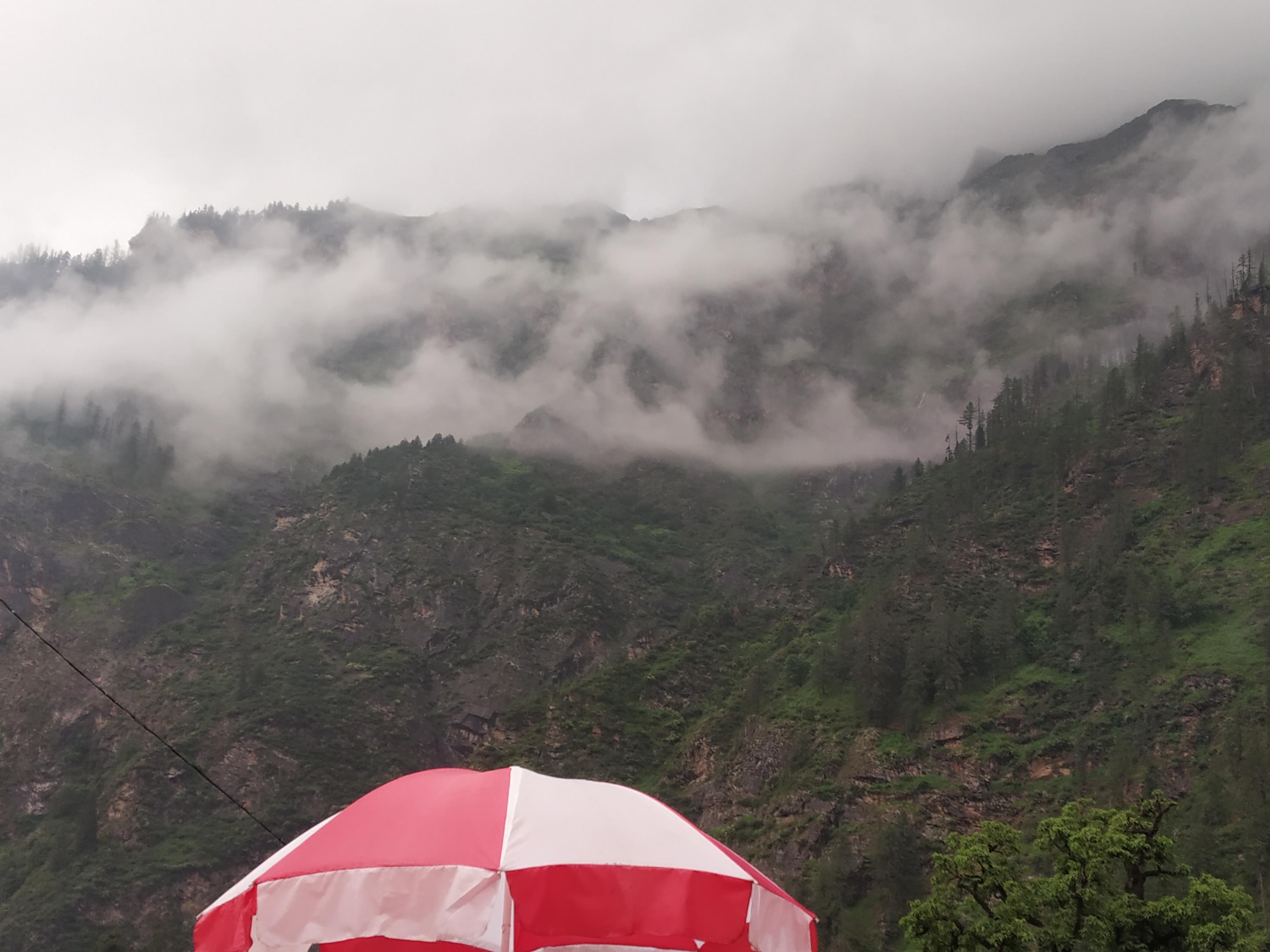

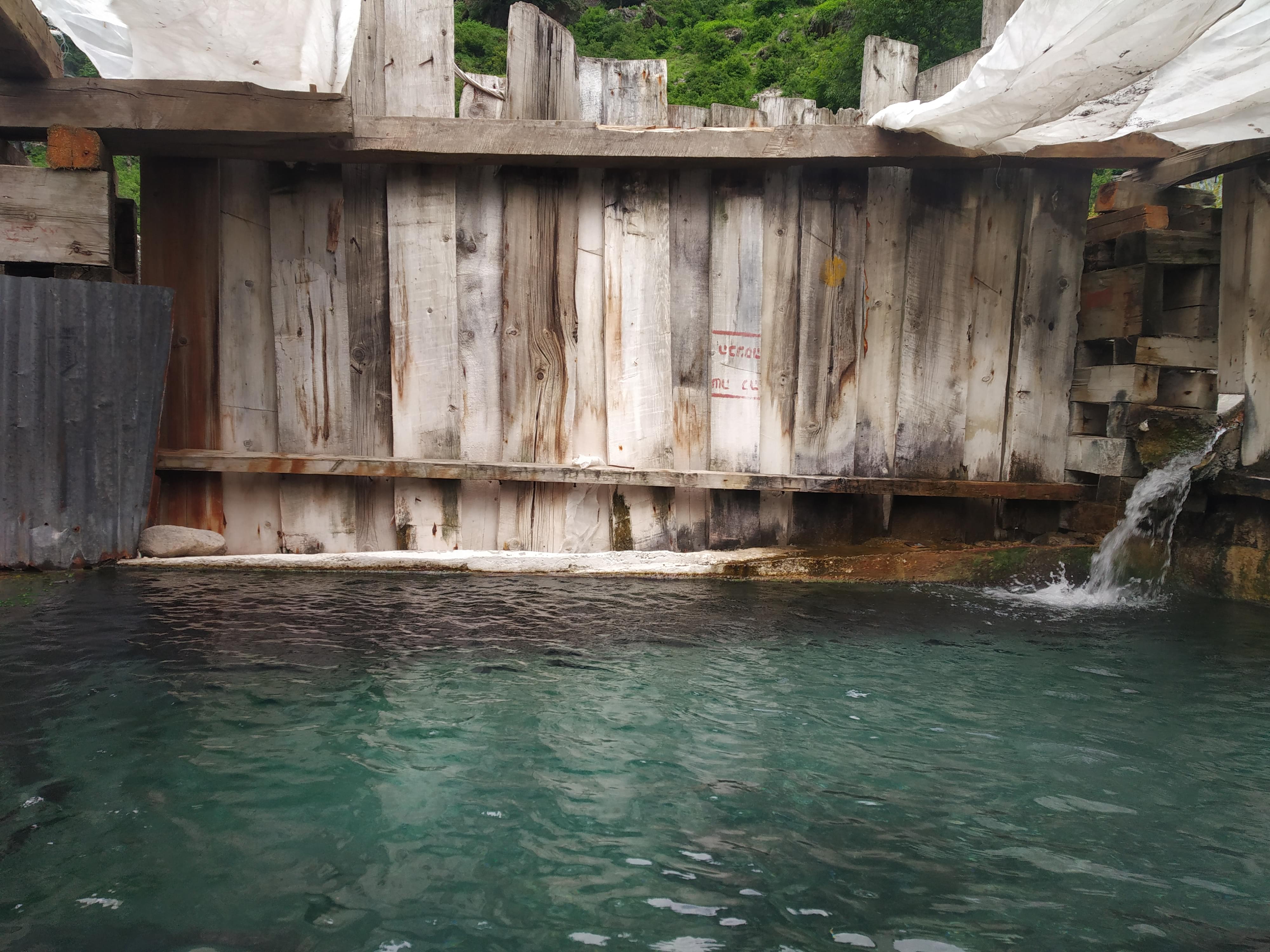










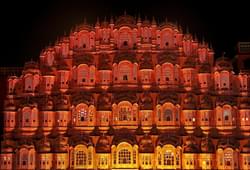

.jpg?gravity=center&width=250&height=170&crop=fill&quality=auto&fetch_format=auto&flags=strip_profile&format=jpg&sign_url=true)
